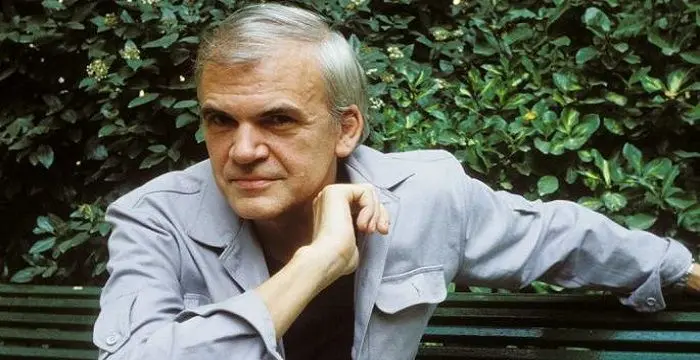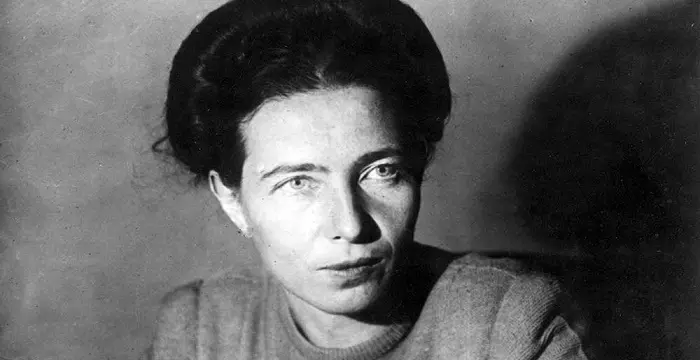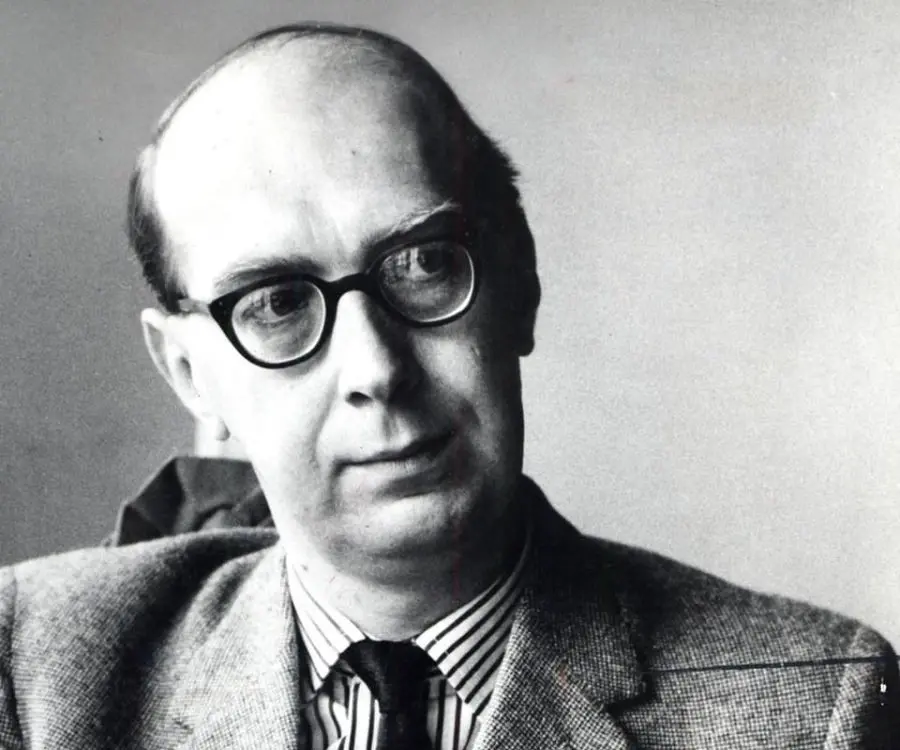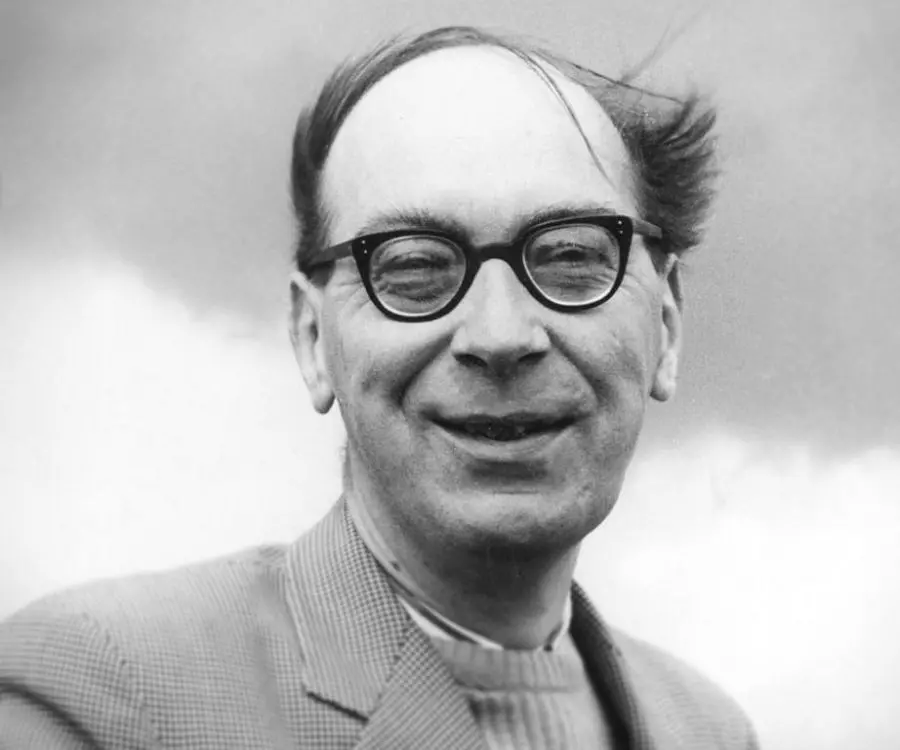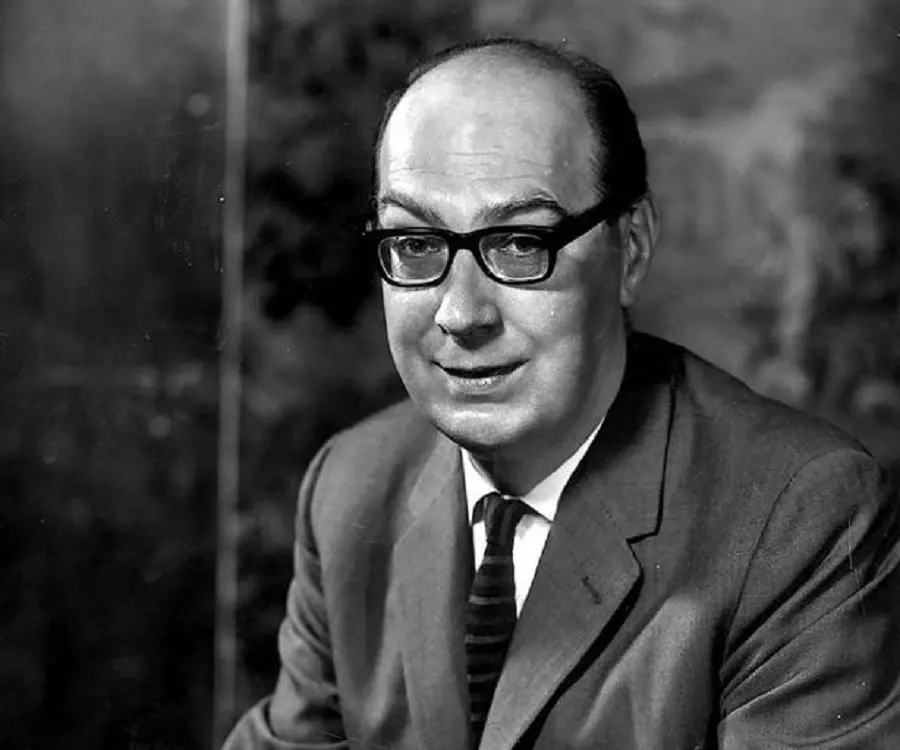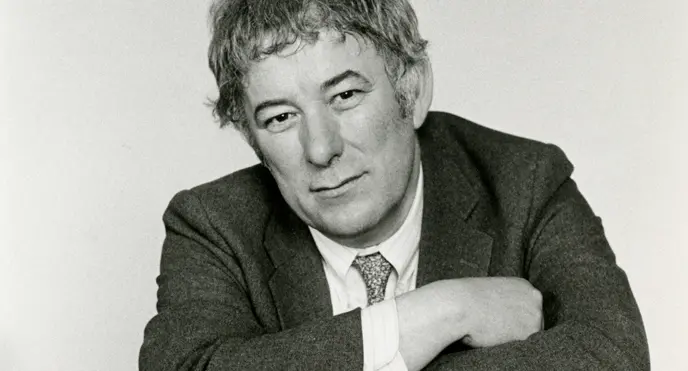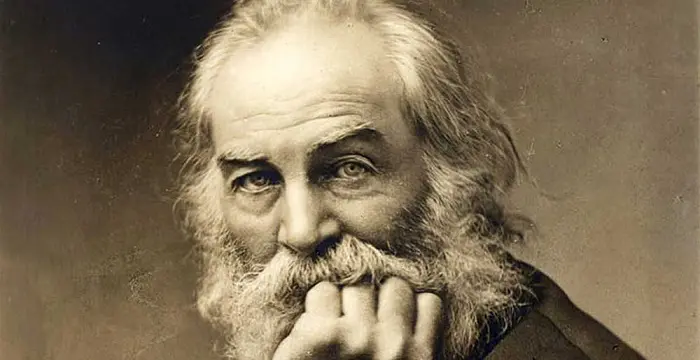
Philip Larkin - Novelists, Family and Family
Philip Larkin's Personal Details
Philip Larkin was considered as one of the greatest English poets of the latter half of the 20th century
| Information | Detail |
|---|---|
| Birthday | August 9, 1922 |
| Died on | December 2, 1985 |
| Nationality | British |
| Famous | Writers, Poets, Novelists |
| Known as | Philip Arthur Larkin |
| Universities |
|
| Birth Place | Radford, Coventry, United Kingdom |
| Gender | Male |
| Father | Sydney Larkin |
| Mother | Eva Emily Day |
| Sun Sign | Leo |
| Born in | Radford, Coventry, United Kingdom |
| Famous as | Poet |
| Died at Age | 63 |
// Famous Novelists
Charles Bukowski
Charles Bukowski was a German-born American novelist, short story writer and poet. With this biography, learn in details about his childhood, life, works, career and timeline
Milan Kundera
Milan Kundera is a Czech-born French writer known for his erotic and political writings. This biography of Milan Kundera provides detailed information about his childhood, life, achievements, works & timeline.
Simone de Beauvoir
Simone de Beauvoir was an eminent French writer, intellectual, activist, and philosopher. This biography profiles her childhood, life, thoughts, achievements and timeline.
Philip Larkin's photo
Who is Philip Larkin?
Philip Larkin was considered as one of the greatest English poets of the latter half of the 20th century. He began his career as a librarian at Wellington, concurrently studying to qualify as a professional librarian. All the while he continued with his literally pursuit, publishing his first collection of poems at the age of 23. It was followed by two novels. Thereafter, he concentrated on poetry writing, publishing his second collection of poems, ‘The Less Deceived’ at the age of 35. Although it made him famous, he took another nine years to publish his third collection, mainly because of his preoccupation as the librarian of the Brynmor Jones Library at the University of Hull. He wrote sparingly; in spite of that he became almost a household name, a rare fit for a poet. Yet his ‘Selected Letters’, containing vulgar outburst against women, minorities, and working-class and published posthumously in 1992, almost obliterated his reputation, labeling him as a misogynist and racist. His reputation was finally restored when 31 years after his death he found a place in the Poet’s Corner at Westminster’s Abbey.
// Famous Poets
Charles Bukowski
Charles Bukowski was a German-born American novelist, short story writer and poet. With this biography, learn in details about his childhood, life, works, career and timeline
Seamus Heaney
Nobel Laureate Seamus Heaney was an Irish poet, playwright and translator. Know about his profile, childhood, life and timeline in the biography below.
Walt Whitman
Walt Whitman was an American poet, journalist and humanist. Read this brief biography to find more on his life & timeline.
Childhood & Early Years
Philip Arthur Larkin was born on 9 August 1922, in Radford, near Coventry, England. His father, Sydney Larkin, had a unique personality, combining a love for poetry with certain degree of nihilism. An admirer of Nazism, he twice attended Nuremberg rallies. A self-made man, he later became Coventry City Treasure.
His mother, Eva Emily Larkin nee Day, was a passive woman, who preferred to be taken care of by her dominating husband. Philip was born younger of their two children, having an elder sister named Catherine or Kitty, ten years his senior.
When he was five years old, the family moved to a larger house near Coventry Railway Station. However, he did not seem to have any happy memory about his childhood. Life was cold and uneventful, neither friends nor relatives ever visited their home.
Until the age of eight, Philips studied at home under the tutorship of his mother and sister. Thereafter, he was admitted to King Henry VIII Junior School, from where he went to King Henry VIII Senior School.
Sometime during his school years, Philip started writing, contributing regularly to the school magazine. He also developed a deep passion for jazz and his father encouraged it by buying him a drum kit and a saxophone. Otherwise engaged, he did poorly in the School Certificate examination in 1938.
Despite his bad results, he was allowed to continue at school. He now started editing the school magazine. In spite of that, he must have taken his studies more seriously because in 1940 he did fairly well in Higher School Certificate, earning distinction in English and History.
In October 1940, as the Second World War was raging through, Philip Larkin entered St John's College, Oxford, with English. Spared from joining the military service due to bad eyesight, he was able to complete the full course.
At Oxford too, Larkin continued with his creative pursuit, publishing ‘Ultimatum’ in the November 28, 1940, issue of the Listener. This was his first poem to be published in any national journal. For his prose, he took up the pseudonym of Brunette Coleman, publishing number of works under this name.
A passive and lonely child in his pre-university days, Larkin underwent a great change soon after entering St John’s. Possibly in 1942, he met future novelist and poet, Kingsley Amis and John Wain, with whom he formed a lasting friendship.
They soon formed a group they dubbed ‘The Seven’. They met regularly, reading and discussing each other’s poetry. They also played the jazz and drank a lot. ‘The Movement’, which tried to establish the predominance of English poetry over modernist poetry, would one day be born out of these gatherings.
In June 1943, three of Larkin’s poems, ‘A Stone Church Damaged by a Bomb’, ‘Mythological Introduction’, and ‘I dreamed of an out-thrust arm of land’, were published in Oxford Poetry. Also in the same year, he graduated with a first class honors degree.
Early Career
Soon after leaving Oxford, Philip Larkin returned to Coventry, living with his parents for some time. Finally in November 1943, he began his career as a librarian at Wellington, Shropshire. While working there, he furthered his education, studying to qualify as a professional librarian, concurrently continuing to write and publish.
In 1945, ten of his poems appeared in ‘Poetry from Oxford in Wartime’. Later in the same year, as his first book ‘The North Ship’ was published, these poems were included in it.
In 1946, he had his first novel, ‘Jill’, published. Written between 1943 and 1944, while he was studying at St John's College, Oxford, the story is set in wartime Oxford. This was also the year when he became Assistant Librarian at the University College of Leicester.
Also in 1946, he discovered the poems of Thomas Hardy and became one of his greatest admirers, learning from him how to use everyday happenings to form the basis of his poems. Later, he acknowledged that the discovery was a turning point in his career.
In 1947, he published his last novel, ‘A Girl in Winter’. Although scholars like John James Osborne found it to be “a harbinger of greatness” he did not publish any more fiction after this, ostensibly for want of inspiration.
In 1949, Larkin completed his studies, becoming an Associate of the Library Association. Thereafter in June 1950, he was appointed sub-librarian at The Queen's University of Belfast. Taking up the post in September 1950, he once again applied himself to writing poetry.
For the next five years, he had few poems published; most of his works being rejected by established publishers. Undeterred, he published ‘XX Poems’, a small collection of poems, at his own cost in 1951.
In 1954, the Fantasy Press published a pamphlet containing five of his poems. Possibly in the same year, his poems ‘Toads’ and ‘Poetry of Departures’ was published by the Marvel Press in a collection.
Getting Recognition
In 1955, Philip Larkin returned to England and took up the position of the Librarian at the University of Hull on 21 March 1955. He spent most of his time at the library, using his office as his study, where he did both his official works and private writings.
In October 1955, he had his second collection of poems, ‘The Less Deceived’ published by the Marvel Press. Most of the poems in this collection were written in Belfast; only eight being written sometime in 1940s. It established him as a poet.
In 1956, he rented his own self-containing apartment on the top floor of a three storied house and started working from there. However, he could not publish his next work until 1964. One reason could be that he became very busy in upgrading the library.
As Librarian
By the time Larkin had taken up the post of the librarian at Hull, a plan for a new university library had already been made. After going through it, he suggested a number of corrections, all of which were accepted. Slowly he emerged as a great figure in post war British Librarianship.
His colleagues later testified that he was an excellent administrator. He motivated his staff not only by setting up a high standard, but also by treating them amicably, punching his orders with humor and compassion.
During his 30 years of his tenure, the library budget rose from £4,500 to £448,500 and the stock increased six-fold. He also computerized all records, making it the first library in Europe to install an automated online circulation system.
Literary Works in Later Part of Life
Along with his official work, Philip Larkin also continued to write poems, albeit at a much slower pace. Indeed, for the first few years, he completed may be just two-and-a-half poems a year. From 1961, he also started writing monthly reviews of jazz recordings for the Daily Telegraph.
In 1963, Faber and Faber republished his first novel ‘Jill’, adding a long introduction by the author. In it, Larkin talked about his days at Oxford and also about his friendship with Kinsley Amis.
On 28 February 1964, he published third collection of poems, ‘The Whitsun Wedding’. Containing his best known poems, such as 'The Whitsun Weddings', 'Days', 'Mr Bleaney', 'MCMXIV', and 'An Arundel Tomb', the book was an instant success, selling 4,000 copies within two months.
In 1970, his reviews on jazz were published as ‘All What Jazz: a Record Diary 1961-1968’. However, he continued to write the reviews till 1971 and a later edition, renamed as entitled ‘All What Jazz: a Record Diary 1961-1971’ included all of them.
Sometime now, he also edited the ‘Oxford Book of Twentieth Century English Verse’, which was published in 1973. Concurrently, he continued to write poems and in 1974, had his last collection of poems, ‘High Windows’ published.
In 1974, he started working on ‘Aubade’, his last major work published in his lifetime. However, he took three years to complete this fifty-line poem and had it published in the 23 December, 1977 issue of The Time Literally Supplement.
After ‘Aubade’, he wrote only one critically acclaimed poem, ‘Love Again’; but this intensely personal poem was published only after his death. His last work to be published was a collection of his essays and reviews. Entitled, ‘Required Writing: Miscellaneous Pieces 1955-1982’, it was published in November 1983.
Major Works
Philip Larkin is best remembered for his three collections of poems; among which ‘The Less Deceived’ (1955) was first to be published. Selected as Book of the Year by the Times Literary Supplement, it instantly established him as a distinguished poet of his generation, and a preeminent voice of “The Movement”.
His second major work, ’The Whitsun Weddings’, was published nine years later in 1964. The collection, containing thirty-two of his poems, cemented his reputation as a poet.
‘High Windows’ published in 1974, contains some of his most famous poems such as ‘High Windows’ and ‘This Be The Verse’. But due to its darker tone it did not get unanimous acclaim. In spite of that, in the first year alone, it sold over 20000 copies.
Awards & Achievements
In 1965, Philip Larkin was awarded the Queen’s Gold Medal for Poetry.
In 1975, he was awarded Commander of the Most Excellent Order of the British Empire (CBE)
In 1976, he received the German Shakespeare-Prize.
In 1978, he was made Companion of Literature.
In 1980, Larkin was elected an Honorary Fellow of the Library Association.
In 1982, he was made a Professor by the University of Hull.
In 1984, he was awarded an honorary D.Litt. by the University of Oxford and elected to the Board of the British Library. Also in the same year, he was offered the post of Poet Laureate, but he declined to take it.
On 15 June, 1985, he was awarded the Order of the Companions of Honor
Personal Life & Legacy
Philip Larkin did not get married; but developed relationship with a string of women. First of them was Ruth Bowman, a sixteen year old academically ambitious school girl, whom he met in 1944. They became engaged in 1948; but split shortly after he moved to Belfast in 1950.
He also had long-lasting relationship with Monica Jones, a lecturer in English; Maeve Brennan, his colleague at Hull and Betty Mackereth, his secretary at Hull. Among them, Monica Jones was the main beneficiary of his will.
In 1985, Philip Larkin was diagnosed with oesophageal cancer. Although he underwent a surgery on 11 June 1985, his cancer was found to have spread and become inoperable.
On 28 November, 1985, he collapsed and was readmitted to the hospital in Hull. While there he asked Monica Jones and Betty Mackereth to destroy his diary. Betty tore up the diaries page by page before burning them to ashes.
He breathed his last on 2 December, 1985 at the age of 63. He was buried at the Cottingham municipal cemetery near Hull. The white headstone at his grave, located on left hand side of the cemetery, simply reads "Philip Larkin 1922–1985 Writer".
Thirty-one years after his death, Larkin was awarded a memorial in Westminster Abbey’s ‘Poets’ Corner’, with his ledger stone being unveiled on December 2, 2016.
// Famous Writers
Joyce Meyer
Joyce Meyer is a Christian author and speaker. This biography provides detailed information about her childhood, life, achievements, works & timeline
Temple Grandin
Temple Grandin is a well-known American writer, autistic activist and animal expert. This biography profiles her childhood, life, achievements, career and timeline
Tennessee Williams
Tennessee Williams was one of the greatest playwrights of the 20th century. This biography of Tennessee Williams provides detailed information about his childhood, life, achievements, works and timeline.
Philip Larkin biography timelines
- // 9th Aug 1922Philip Arthur Larkin was born on 9 August 1922, in Radford, near Coventry, England. His father, Sydney Larkin, had a unique personality, combining a love for poetry with certain degree of nihilism. An admirer of Nazism, he twice attended Nuremberg rallies. A self-made man, he later became Coventry City Treasure.
- // 1938Sometime during his school years, Philip started writing, contributing regularly to the school magazine. He also developed a deep passion for jazz and his father encouraged it by buying him a drum kit and a saxophone. Otherwise engaged, he did poorly in the School Certificate examination in 1938.
- // 1940Despite his bad results, he was allowed to continue at school. He now started editing the school magazine. In spite of that, he must have taken his studies more seriously because in 1940 he did fairly well in Higher School Certificate, earning distinction in English and History.
- // Oct 1940In October 1940, as the Second World War was raging through, Philip Larkin entered St John's College, Oxford, with English. Spared from joining the military service due to bad eyesight, he was able to complete the full course.
- // 28th Nov 1940At Oxford too, Larkin continued with his creative pursuit, publishing ‘Ultimatum’ in the November 28, 1940, issue of the Listener. This was his first poem to be published in any national journal. For his prose, he took up the pseudonym of Brunette Coleman, publishing number of works under this name.
- // 1942A passive and lonely child in his pre-university days, Larkin underwent a great change soon after entering St John’s. Possibly in 1942, he met future novelist and poet, Kingsley Amis and John Wain, with whom he formed a lasting friendship.
- // Jun 1943In June 1943, three of Larkin’s poems, ‘A Stone Church Damaged by a Bomb’, ‘Mythological Introduction’, and ‘I dreamed of an out-thrust arm of land’, were published in Oxford Poetry. Also in the same year, he graduated with a first class honors degree.
- // Nov 1943Soon after leaving Oxford, Philip Larkin returned to Coventry, living with his parents for some time. Finally in November 1943, he began his career as a librarian at Wellington, Shropshire. While working there, he furthered his education, studying to qualify as a professional librarian, concurrently continuing to write and publish.
- // 1945In 1945, ten of his poems appeared in ‘Poetry from Oxford in Wartime’. Later in the same year, as his first book ‘The North Ship’ was published, these poems were included in it.
- // 1946Also in 1946, he discovered the poems of Thomas Hardy and became one of his greatest admirers, learning from him how to use everyday happenings to form the basis of his poems. Later, he acknowledged that the discovery was a turning point in his career.
- // 1947In 1947, he published his last novel, ‘A Girl in Winter’. Although scholars like John James Osborne found it to be “a harbinger of greatness” he did not publish any more fiction after this, ostensibly for want of inspiration.
- // 1951For the next five years, he had few poems published; most of his works being rejected by established publishers. Undeterred, he published ‘XX Poems’, a small collection of poems, at his own cost in 1951.
- // 1954In 1954, the Fantasy Press published a pamphlet containing five of his poems. Possibly in the same year, his poems ‘Toads’ and ‘Poetry of Departures’ was published by the Marvel Press in a collection.
- // 1955Philip Larkin is best remembered for his three collections of poems; among which ‘The Less Deceived’ (1955) was first to be published. Selected as Book of the Year by the Times Literary Supplement, it instantly established him as a distinguished poet of his generation, and a preeminent voice of “The Movement”.
- // 21st Mar 1955In 1955, Philip Larkin returned to England and took up the position of the Librarian at the University of Hull on 21 March 1955. He spent most of his time at the library, using his office as his study, where he did both his official works and private writings.
- // Oct 1955In October 1955, he had his second collection of poems, ‘The Less Deceived’ published by the Marvel Press. Most of the poems in this collection were written in Belfast; only eight being written sometime in 1940s. It established him as a poet.
- // 1956 To 1964In 1956, he rented his own self-containing apartment on the top floor of a three storied house and started working from there. However, he could not publish his next work until 1964. One reason could be that he became very busy in upgrading the library.
- // 1961Along with his official work, Philip Larkin also continued to write poems, albeit at a much slower pace. Indeed, for the first few years, he completed may be just two-and-a-half poems a year. From 1961, he also started writing monthly reviews of jazz recordings for the Daily Telegraph.
- // 1963In 1963, Faber and Faber republished his first novel ‘Jill’, adding a long introduction by the author. In it, Larkin talked about his days at Oxford and also about his friendship with Kinsley Amis.
- // 1964His second major work, ’The Whitsun Weddings’, was published nine years later in 1964. The collection, containing thirty-two of his poems, cemented his reputation as a poet.
- // 28th Feb 1964On 28 February 1964, he published third collection of poems, ‘The Whitsun Wedding’. Containing his best known poems, such as 'The Whitsun Weddings', 'Days', 'Mr Bleaney', 'MCMXIV', and 'An Arundel Tomb', the book was an instant success, selling 4,000 copies within two months.
- // 1965In 1965, Philip Larkin was awarded the Queen’s Gold Medal for Poetry.
- // 1973 To 1974Sometime now, he also edited the ‘Oxford Book of Twentieth Century English Verse’, which was published in 1973. Concurrently, he continued to write poems and in 1974, had his last collection of poems, ‘High Windows’ published.
- // 1974 To 23rd Dec 1977In 1974, he started working on ‘Aubade’, his last major work published in his lifetime. However, he took three years to complete this fifty-line poem and had it published in the 23 December, 1977 issue of The Time Literally Supplement.
- // 1974 To 2000‘High Windows’ published in 1974, contains some of his most famous poems such as ‘High Windows’ and ‘This Be The Verse’. But due to its darker tone it did not get unanimous acclaim. In spite of that, in the first year alone, it sold over 20000 copies.
- // 1975In 1975, he was awarded Commander of the Most Excellent Order of the British Empire (CBE)
- // 1976In 1976, he received the German Shakespeare-Prize.
- // 1978In 1978, he was made Companion of Literature.
- // 1980In 1980, Larkin was elected an Honorary Fellow of the Library Association.
- // 1982In 1982, he was made a Professor by the University of Hull.
- // Nov 1983After ‘Aubade’, he wrote only one critically acclaimed poem, ‘Love Again’; but this intensely personal poem was published only after his death. His last work to be published was a collection of his essays and reviews. Entitled, ‘Required Writing: Miscellaneous Pieces 1955-1982’, it was published in November 1983.
- // 1984In 1984, he was awarded an honorary D.Litt. by the University of Oxford and elected to the Board of the British Library. Also in the same year, he was offered the post of Poet Laureate, but he declined to take it.
- // 11th Jun 1985In 1985, Philip Larkin was diagnosed with oesophageal cancer. Although he underwent a surgery on 11 June 1985, his cancer was found to have spread and become inoperable.
- // 15th Jun 1985On 15 June, 1985, he was awarded the Order of the Companions of Honor
- // 28th Nov 1985On 28 November, 1985, he collapsed and was readmitted to the hospital in Hull. While there he asked Monica Jones and Betty Mackereth to destroy his diary. Betty tore up the diaries page by page before burning them to ashes.
- // 2nd Dec 1985He breathed his last on 2 December, 1985 at the age of 63. He was buried at the Cottingham municipal cemetery near Hull. The white headstone at his grave, located on left hand side of the cemetery, simply reads "Philip Larkin 1922–1985 Writer".
- // 2nd Dec 2016Thirty-one years after his death, Larkin was awarded a memorial in Westminster Abbey’s ‘Poets’ Corner’, with his ledger stone being unveiled on December 2, 2016.
// Famous Leo Celebrities peoples
Eugenia Cooney
Check out all that you wanted to know about Eugenia Cooney, the famous American Vlogger & YouTube Personality; her birthday, her family and personal life, her boyfriends, fun trivia facts and more.
Princess D
Princess D (Destiny Indira Cox) is an American rapper, dancer and social media personality. Let’s have a look at her family and personal life including age, birthday, net worth, and fun facts.
Payton Moormeier
Payton Moormeier is an American social-media personality best known for his musical.ly videos. Check out this family, personal life, etc.
Grian
Grian is an English YouTube gamer and social media influencer. Check out this biography to know about his birthday, childhood, family life, achievements and fun facts about him.
Emmi Butler
Emmi Butler is an American YouTuber and social media star. Let’s take a look at her family and personal life including age, date of birth, net worth, and fun facts.
Erica Delsman
Erica Delsman is an American Musical.ly Star and social media personality. Let’s take a look at her family & personal life including age, date of birth, net worth, and fun facts.
Philip Larkin's FAQ
What is Philip Larkin birthday?
Philip Larkin was born at 1922-08-09
When was Philip Larkin died?
Philip Larkin was died at 1985-12-02
Where was Philip Larkin died?
Philip Larkin was died in Kingston upon Hull
Which age was Philip Larkin died?
Philip Larkin was died at age 63
Where is Philip Larkin's birth place?
Philip Larkin was born in Radford, Coventry, United Kingdom
What is Philip Larkin nationalities?
Philip Larkin's nationalities is British
What was Philip Larkin universities?
Philip Larkin studied at St John's College, Oxford, University of Oxford
Who is Philip Larkin's father?
Philip Larkin's father is Sydney Larkin
Who is Philip Larkin's mother?
Philip Larkin's mother is Eva Emily Day
What is Philip Larkin's sun sign?
Philip Larkin is Leo
How famous is Philip Larkin?
Philip Larkin is famouse as Poet

